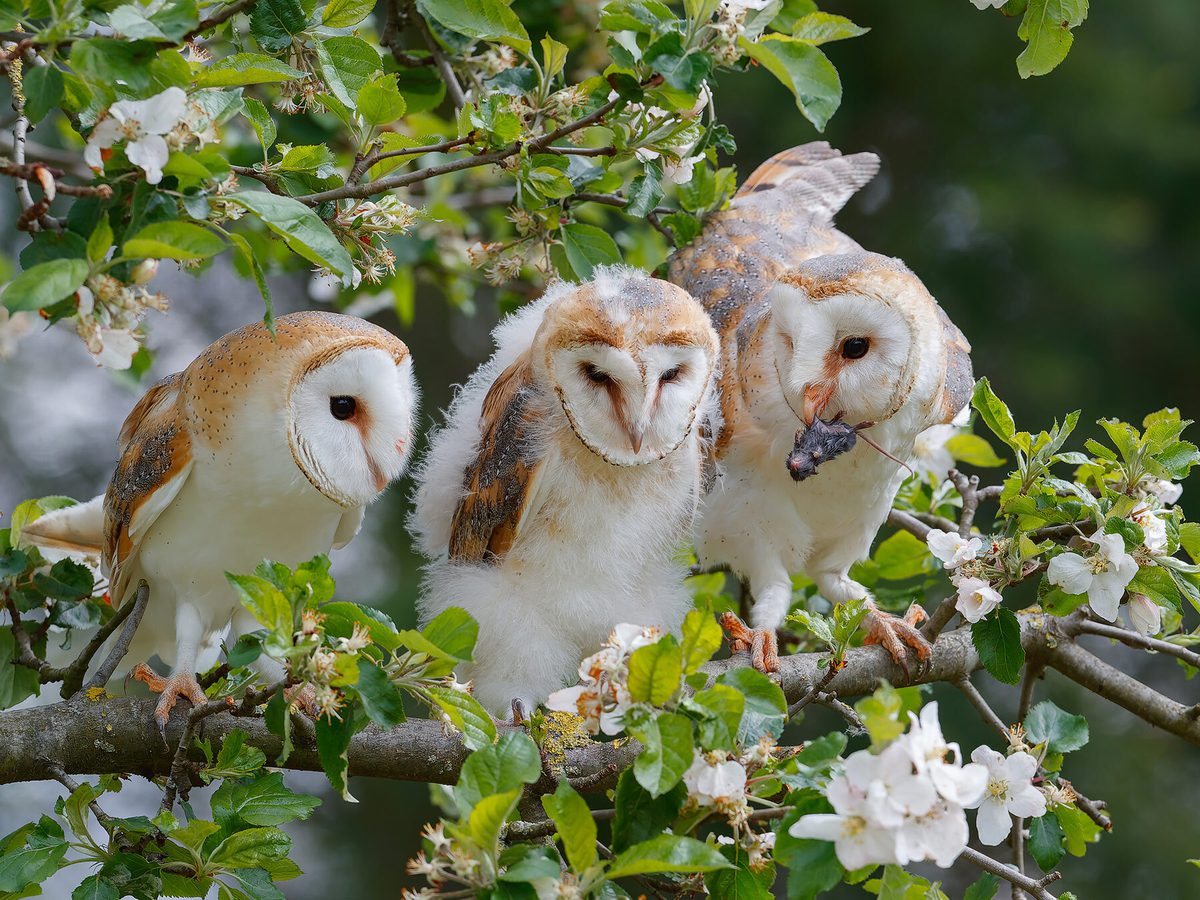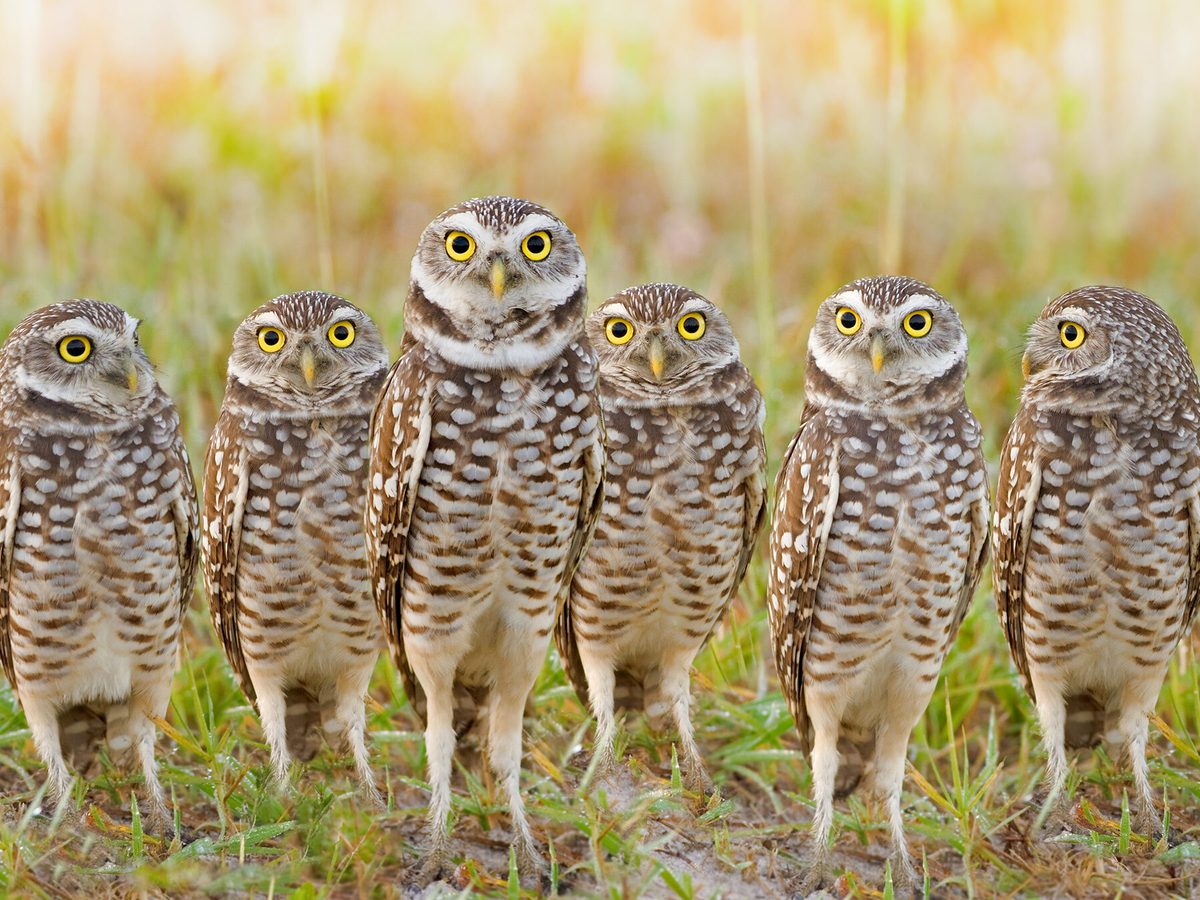If you're lucky enough to see an owl in the wild, they're almost certainly on their own. If you've ever seen more than one on their own, consider yourself lucky as this is extremely rare. So anyway, what is the collective noun for a group of owls?
The most common collective noun for a group of owls is a parliament. Other less common names include a wisdom, congress, hooting and a stare of owls. In flight, owls can be referred to as a silence; this is because owls have extremely quiet flight, making them excellent hunters.
The terms above are the most commonly used but are not the complete list and can vary depending on which part of the world or the part of the country you're from.
Continue reading for an explanation of why owls got some of these terms when owls flock together and some other relevant questions on all things owls and groups, or should we say parliaments.
Other names for a group of owls
- a bazaar of owls
- a diss of owls
- an eyrie of owls
- a looming of owls
- a nest of owls
- a pair of owls
- a sagaciousness of owls
- a stooping of owls

A family of Great Horned Owls
Why is a group of owls called a parliament?
Most collective nouns for groups of birds date back to the middle ages and are usually based on a bird's characteristic or trait. A lot of them also originally we're used in poems and have stuck ever since.
There are a few potential reasons why a group of owls is called a parliament became such a well known and widely used term. However, the most likely reason is that in C.S. Lewis' 1950s book, The Chronicles of Narnia, he referred to a group of owls as a parliament. It's safe to say this book went on to be reasonably popular, so it could explain why this term became so well known and widespread.
The actual origin of this term is thought to date back to the 1300s, where the "Parlement of Foules", which Geoffrey Chaucer, a 14th Century Poet, used to describe a large parliament of birds (fowls).
You could say it would be highly plausible that C.S. Lewis read some of Chaucer's poetry at some point and potentially reworked "foules" to become "owls".
Let's face it, a 'parliament of owls', sounds much more interesting and poetic than 'a group of owls' or 'a flock of owls.' Realistically, it probably didn't bother C.S. Lewis too much about whether owls congregate in these groups or flock together.
So, in fact, 'a parliament of owls' is, well, poetry!
Another reason, although less likely in our opinion, is that a Parliament is a place in the United Kingdom where politicians meet, and often there is a lot of shouting and hooting you could say, when debating political issues.
Parliaments are also associated with knowledge and wisdom (take that with a pinch of salt), and as owls are also considered to be wise and knowledgable (wise as an owl), there could be links and wordplay taken from this.

A family of barn owls in a tree
What is a group of flying owls called?
When in flight, a group of owls is referred to a silence; however, it's extremely rare to see owls flying together in groups.
This name has been earned as owls have the truly remarkable ability to fly almost silently, which is crucial to their survival. This applies to all shapes and sizes of owls, so even the larger owls like the barn owl or great horned owl fly virtually silent.
This skill is so crucial to the survival of owls, as it makes them able to stealthily hunt their prey, meaning that prey won't be able to hear the nearby owl and escape.
It's quite rare to see a group of owls flying together, but it does happen. The best time to see this is when there are cold winter nights, as many owls will hunt during the daylight instead and sometimes will hunt in their small communities.
What is a group of baby owls called?
Generally speaking, a group of baby owls is called a brood of owlets. Owlet is the term given to baby or owl hatchlings.
Do owls flock together in groups?
A few species of owls do actually occasionally form small flocks. This usually comprises of either family members or a few owls from the same species. Usually, there are up to 5 owls in the group and can vary between species. Certain species will roost communally in small numbers and sometimes can be seen flying together.
Short-eared owls and barn owls are both known to form these small groups. Burrowing Owls sometimes nest in small groups.

A flock of burrowing owls
When do owls flock together?
If owls choose to form a small flock with other owls, it will be outside of the breeding season. During the breeding season, owls generally live together in a pair.
Why do owls flock together?
It's thought that owls roost together for a couple of reasons. The first is that they can look out for any predators or mobbing songbirds and for warmth during the colder months, as they can huddle together.
Roosts are usually located nearby to good hunting spots that have abundant prey for owls to hunt. So this could be another reason, as this information is essentially shared with owls joining the roost.

Pair of Barred Owls
Do owls live alone or in groups?
Owls generally live on their own, in a pair with their mate or with other family members; however, living with other family members may only be until young owls reach the age of independence.
How many owls are in a flock?
It's generally considered there needs to be at least three to five owls together to be considered a flock. Below that, they are just a pair or solitary on their own.
What is a pair of owls called?
There is no specific term for two owls together, so they are just known as a pair of owls.

A pair of little owls
What is a group of barn owls called?
There is one specific collective noun for a group of barn owls; a stable of barn owls.
What is a group of snowy owls called?
A group of snowy owls is often referred to as a blizzard of snowy owls.
What is a group of barred owls called?
A group of barred owls have two collective nouns; a jail of barred owls and a prohibition of barred owls.
